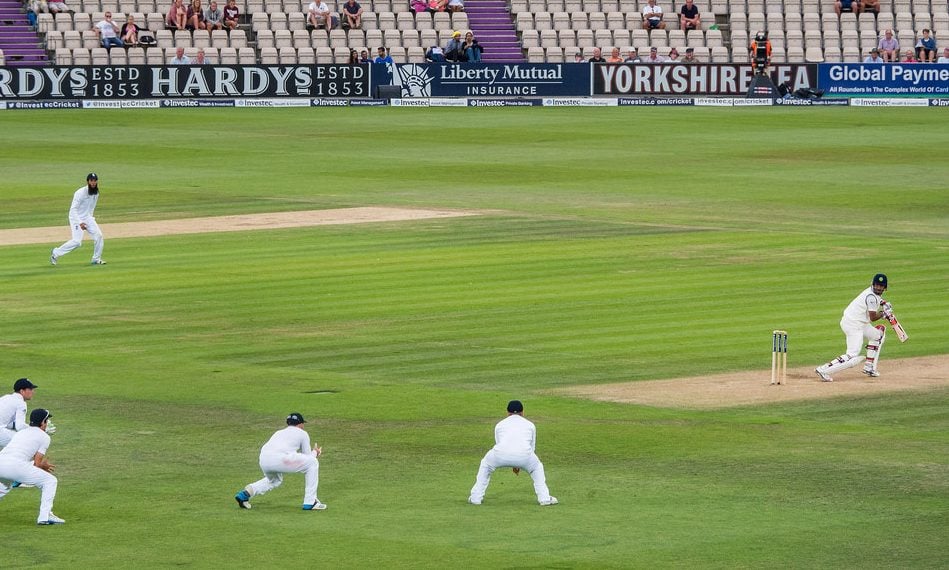England’s recent ODI series in India marked the beginning of a carefully orchestrated run of games in preparation for this year’s Champions Trophy, which will be held on home turf in early June. The next four months—with ODI series against the West Indies, Ireland, and South Africa—will see continued opportunities for experimentation and development within a young but increasingly confident squad.
With an eye on the path ahead, then, what can be taken from the series defeat in India? In the first two, morale-sapping games, a worrying pattern began to emerge: England’s bowling attack would make a promising start, blunting the Indian top order early on in the innings—taking the first three wickets for 56 and 25 runs respectively–only to let two batsmen steady the ship and ultimately take the game away from them with an imperious stand of at least 200 runs. Why the repeated slump? To Morgan’s credit, it seemed that his ever cool captaincy was not to blame. Rather, his plans in the field were inevitably hamstrung by poor execution on the part of his bowlers, and two unhelpful team selections which deprived England’s attack of depth.
Willey has further strengthened his place in the side, drawing the new ball back into the right hander, and consistently taking wickets at the top in combination with Woakes’ economical spells at the other end. Beyond the first ten overs, however, “taking wickets on flat pitches when the ball’s not moving around’ has proven to be the team’s ‘Achilles heel”, as Trevor Bayliss was quick to admit before boarding the squad’s charter to Kanpur, ahead of the first of three Twenty20 games. Stokes, Ball, and Plunkett appeared to frustrate their captain with their inability to bowl consistent lines and lengths, providing between them four of the top 30 most expensive England ODI bowling figures ever. And Moeen Ali and Adil Rashid continued to disappoint in the typically spin-friendly conditions of the sub-continent, with neither of them taking a single wicket in the entire series.
Credit, of course, must also be given to India’s middle order, who capitalised on a lacklustre bowling attack with Kohli, Jadhav, Yuvraj, and Dhoni all making impressive tons. It was their relentless ability to put runs on the board that denied England yet another chance to come home with a ODI series victory—something they have failed to do for over thirty years now—despite scoring over a thousand runs in only three matches. However, England need not be disheartened. A resurgent bowling order in the third and final match cramped the Indian middle-order and ultimately reaped a desperately needed win, with Ball’s gutsy full-length bowling keeping the batsmen to under a run a ball, and Stokes’ consistent control earning him three valuable wickets.
There were several triumphs amongst the English batsmen. Roy, averaging over 70, has had an enormously impressive series—consistently brutal at the top, he can be counted on to put a hefty dent into any daunting run chase. Morgan has reconciled effective captaincy with proficient batting, coming through with a steely century in the second game. And Stokes has continually proven himself an invaluable contributor in the back end of the innings, belting two swift half centuries.
Looking ahead, with England’s batting not posing any issues, it’s disappointing to see that the selectors have announced an unchanged squad for the upcoming series in the West Indies. Arguably, Broad or Finn’s resurgence into the team was called for, perhaps at the expense of Buttler, who has failed to excite with the bat, and whom Bairstow can aptly replace behind the stumps. And Mark Wood, now recovered from an ankle injury, would have ideally slotted in for Plunkett, bringing his extra pace into the attack. Batting firepower will no doubt pull the team through against a weak West Indian side, who currently sit at ninth place in the ICC ODI rankings, but come Summer England will no longer be able to hide behind large totals when facing the likes of Australia’s Warner and Smith. All in all, the ODI series in India – dramatic, tense, hard-fought—proved a mixed bag. A disappointing result, yes—but one from which the squad can take much encouragement.



